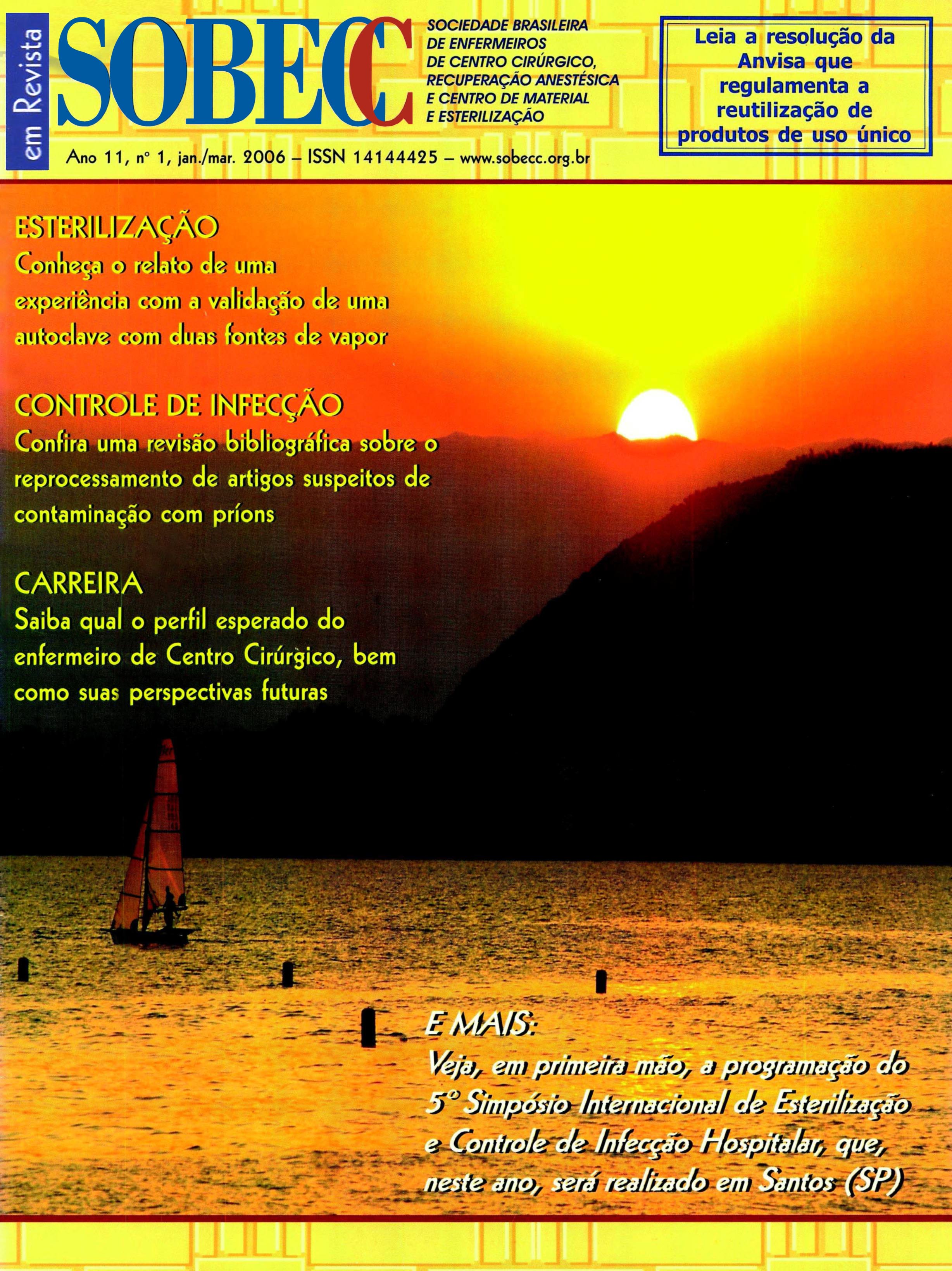Validation of the Physical Process of Steam Sterilization: Experience Report
Keywords:
validation, steam sterilization.Abstract
Validation of the sterilization cydes by steam is a legal demand of ISO/NBR 11134, seeking to assure the quality of the material sterilized under steam autoclavation. lt was developed a study in a central supply unit located in a hospita l of extra size in the city of Santos (BR) to describe the validation process of a steam sterilizer after the changing of the inner cham ber. ln this central supply unit the steam is provided by two different sources and then it was compared the outcomes of the validation process by using steam from a pipe-line with those obtained from the use of steam provided by a generator. Oualification of the functionality of the equipmen t showed that the appropriate tem pe ratu res were reached. ln the qualification with steam from a pipe-line was observed two poi nts w i th temperatu res va rying of 0,3 to O, 7ºC of the reference tempera tu re, however this variat ion was of up to 11ºC below reference temperature with the steam generated by esterilizador. After ana lyzing possible causes it was detected a problem in the gasket after the changing of the inner chamber. The validat ion in two ways of steam supply reveled a problem that could have been masked, i n case the qualification was not accomplished with both steam sources The popularization of this report is pertinent as track for resolution of problems when similar problems happen in the validation of autoclaves
References
Fletcher RH, Fletcher SW, Wagner EH. Epidemiologia clín ica : elementos essencia is. 3ª ed. Porto Alegre. Artmed; 200 2.
European Normatization EN 554. Dispõe sobre a esterilização de instrumentos médicos - validação e controle de rotina da esterilização por vapor de água . Genebra; 1 99 4.
Graziano KU. Processo de limpeza, desinfecção e esterilização de artigos odonto-médico-hospitalares e cuidados com o ambiente em Centro C ir úrg ico . l n: Lacerda R A . Controle de infecção em Centro Ci rúr gico: fatos, mitos e contro vérsias. São Paulo: Actínia; 2003. P. 163 -9 5.
Associação Brasileira de Normas Téc n icas . NBR-15O 1 1 1 3 4 . Esterilização de produtos hospi talares - requisitos para validação e controle de rotina - esterilização por calor úmido. Rio de Janeiro: 2001 .
Pinheiro 5, Graziano KU, Abdo N. Relatório de pesquisa: Central de material na realidade brasileira. São Paulo: 2004.
Galluci MP. Validação do processo de esterilização a vapor saturado sob pressão em hospitais do Município de São Paulo. [Tese]. São Paulo (SP): Universidade Federal de São Paulo; 2001.
Downloads
Published
How to Cite
Issue
Section
License
By publishing in Revista SOBECC, authors retain the copyright of their article and agree to license their work using a Creative Commons Attribution (CC BY 4.0) International Public License, thus accepting the terms of this license. The CC BY 4.0 license allows others to distribute, remix, adapt, and create from the published article, even for commercial purposes, provided they give due credit to the creators of the work (authors of the article).
The authors grant to Revista SOBECC the right of first publication, to identify itself as the original publisher, and grant to the journal a non-exclusive license to use the work in the following ways: (1) to sell and/or distribute the article in hard copies and/or in electronic format; (2) to distribute parts and/or the entire article in order to promote the journal through the internet and other digital and printed media; (3) to record and reproduce the article in any format, including digital media.
With this license, authors can enter into separate contracts for non-exclusive distribution of the article (e.g., publishing in an institutional repository or as a book chapter), with acknowledgement of authorship and initial publication in Revista SOBECC. Authors are encouraged to publish and distribute their work online after publication in the Revista SOBECC, as this can increase the article's visibility and impact.
In line with the journal's policies, each published article will be assigned a CC BY 4.0 license, which will be visible on the abstract page and in the PDF of each article with the respective link to the license terms.











